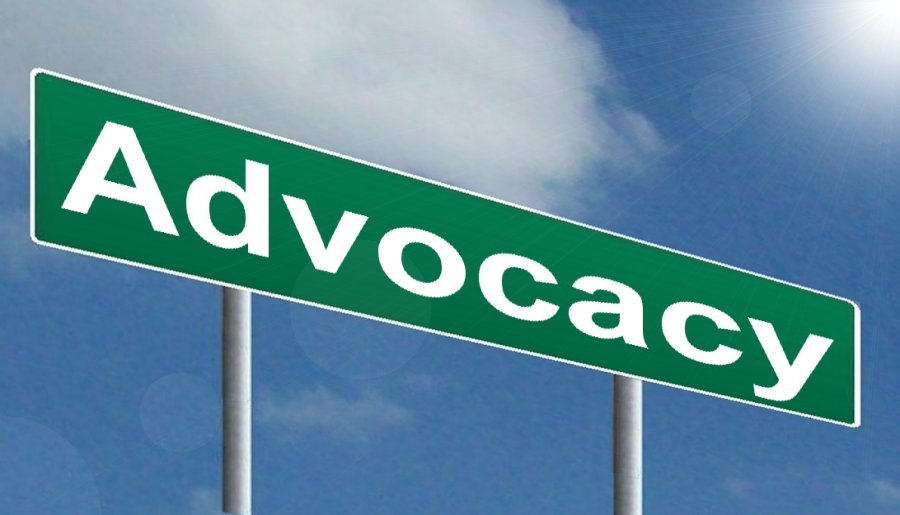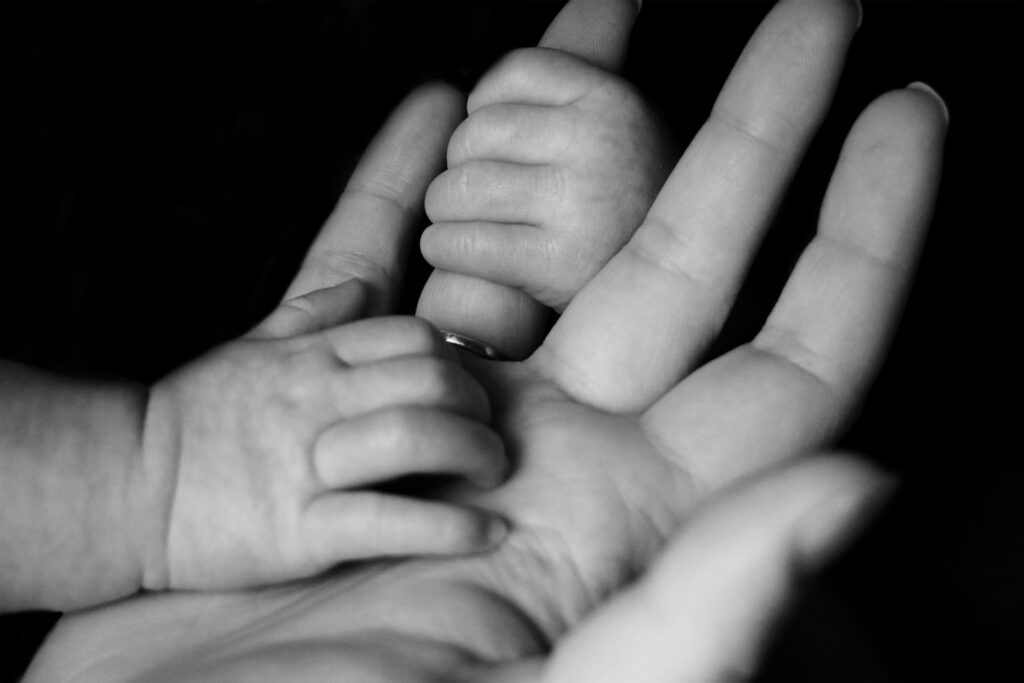
For generations, the narrative surrounding pregnancy and childbirth has been inextricably associated with the female experience. Yet, as comprehension of gender identity advances and medical opportunities expand, this narrative is being meticulously challenged and rewritten by individuals who demonstrate that the desire and capacity to carry and give birth to a child are not confined to a single gender.
Across the globe, transgender men are embarking on the profound journey of pregnancy and parenthood, navigating intricate personal decisions, medical considerations, and societal responses. These pioneering individuals, frequently termed “seahorse dads”—a reference to the biological fact that male seahorses carry and give birth to their offspring—illuminate the profoundly human yearning for family and challenge entrenched perceptions regarding who can assume the role of parent.
Their narratives provide crucial insights into the convergence of gender identity, reproductive rights, healthcare accessibility, and the often-unanticipated challenges and triumphs that emerge when conventional expectations collide with personal realities. Through their experiences, we acquire a more holistic understanding of the diverse routes to parenthood and the fortitude necessary to pursue one’s authentic self while establishing a family.

1. **Introduction to the Concept of “Seahorse Dads”**:The term “seahorse dad” has surfaced as a descriptor for transgender men who carry and deliver children. This evocative expression establishes a parallel with the natural realm, specifically with seahorses and sea dragons, which are unique within the animal kingdom as the male of the species assumes responsibility for carrying the fertilized eggs and giving birth.
This comparison aids in visualizing and normalizing the biological reality that individuals assigned female at birth, irrespective of their current gender identity, may still retain the requisite reproductive organs to conceive and carry a pregnancy. It underscores that while gender identity aligns with the male gender, the biological process of gestation is facilitated by female reproductive anatomy.
The concept emphasizes the fact that fatherhood does not inherently exclude the experience of pregnancy. For transgender men who opt for this path, it signifies a profoundly personal decision to integrate their male identity with the biological capacity they have preserved, fulfilling a desire to experience parenthood in a manner that feels authentic to them.
2. **Thomas Beatie: A Historical Precedent**: In a moment that garnered global attention and ignited widespread discourse, Thomas Beatie emerged as the world’s first individual recognized as a man to experience pregnancy and childbirth approximately 16 years ago. His story, which surfaced in 2008, propelled the notion of a pregnant transgender man into the public sphere, challenging entrenched beliefs about gender, biology, and parenthood.
Born female, Thomas underwent a gender transition to identify as a transgender man. While he transitioned medically and legally, he made the deliberate decision to preserve his female reproductive organs, a choice that would subsequently empower him to realize his aspiration of carrying a child.
His decision to conceive and the ensuing birth of his first daughter, Susan, were unprecedented and revolutionary. This event signified a watershed moment in the public comprehension and recognition of transgender experiences, particularly with regard to reproductive capacities, prompting a global dialogue about the possibilities transcending traditional gender norms.
3. **Thomas Beatie’s Path to Transition and Retaining Fertility**: Born Tracy Lehuanani LaGondino in Hawaii in 1974, Thomas Beatie embarked on a journey characterized by the recognition of his male identity from an early age. By the age of ten, he had commenced identifying as a boy, and he initiated testosterone therapy at the age of 23.
During his teenage years, he emerged as a highly motivated individual with a multitude of accomplishments. He pursued a career in modeling and advanced to the finals of the Miss Hawaii Teen USA pageant. Demonstrating athletic excellence, Thomas also excelled in martial arts, engaging in karate and Taekwondo, and secured a junior championship at the 1992 Aloha State Games.
A pivotal moment in his physical transition occurred in 2002 when Thomas underwent surgery to remove his breasts. He also took legal measures to align his identity documents with his male gender, officially altering his sex marker from “female” to “male” on both state and federal identification. Crucially, he made a deliberate decision to retain his internal female reproductive organs, a choice that preserved the potential for biological parenthood through gestation.
4. **Thomas Beatie’s Decision to Conceive and Early Challenges**: The aspiration to become a parent served as a significant motivator for Thomas Beatie. In 2006, he made the pivotal and unforeseen decision to discontinue his testosterone treatment with the specific objective of conceiving a child. This decision was reached in the context of encountering fertility challenges with his then-wife, Nancy.
With Nancy experiencing difficulties in conceiving, Thomas made the courageous and deeply personal decision to carry the child himself. This necessitated the cessation of the hormone therapy that constituted a vital component of his gender transition, representing a substantial personal sacrifice aimed at fulfilling the couple’s aspiration for a family.
The process of pursuing pregnancy as a transgender man presented immediate hurdles. Thomas reported encountering discrimination from doctors who rejected them owing to religious beliefs. Healthcare professionals occasionally declined to use male pronouns when referring to him or acknowledge Nancy as his wife, and receptionists were reported to have ridiculed them, highlighting the lack of understanding and prejudice prevalent within certain segments of the medical system at that time.

5. **The Public Reaction and Opposition Faced by Thomas Beatie**: The iconic image of Thomas Beatie featuring a visibly pregnant belly, which first emerged in 2008, generated substantial reverberations across the globe. The media promptly bestowed upon him the title of “the pregnant man,” and his narrative evolved into a global phenomenon, inciting intense curiosity, discourse, and, unfortunately, considerable backlash.
His journey was far from straightforward amidst public scrutiny. Thomas encountered a torrent of adverse reactions, encompassing hate emails and death threats from a multitude of individuals and groups who opposed the notion of a man giving birth. Even within their personal circle, friends and family occasionally offered no support; the context indicates that the majority of Nancy’s family were not even aware that Thomas was transgender, underscoring the isolation they endured.
Despite this intense and frequently hostile public reception, Thomas steadfastly advocated for his authentic self and his entitlement to pursue parenthood. His fortitude in the face of widespread misunderstanding and opposition constituted a remarkable facet of his pioneering experience, laying the groundwork for heightened (albeit still evolving) public awareness.

6. **The Birth of Susan and Growth of Thomas Beatie’s Family**: The culmination of Thomas Beatie’s first pregnancy was the delivery of his daughter, Susan. Following an arduous 48-hour labor, Susan was born in a healthy and jubilant state. Thomas had been resolute in his decision to opt for a natural birth, successfully challenging some expectations associated with his unique circumstances.
His case was particularly noteworthy as it represented the first documented instance in which a legally recognized male gave birth within a marital relationship with a woman. This legal and social context added an additional layer of complexity and significance to his narrative, posing a challenge to established legal and societal norms concerning family composition and parenthood.
Over the five-year period subsequent to Susan’s birth, Thomas persisted in his endeavor to expand his family. During this time, while abstaining from testosterone therapy, he underwent four additional pregnancies, though one, unfortunately, culminated in an ectopic pregnancy. Alongside his first wife, Nancy, they raised Susan and their two sons, Austin and Jensen, presenting themselves publicly as a traditional family unit rooted in strong values, even though their journey to becoming a family diverged markedly from the conventional narrative.
7. **Thomas Beatie’s Advocacy and Later Life**: Beyond his personal experience, Thomas Beatie harnessed the platform afforded by his story to advocate for the reproductive rights of transgender individuals. In April 2008, he made an appearance on The Oprah Winfrey Show for an exclusive hour-long interview, addressing a global audience regarding his convictions.
During the interview, he openly deliberated on the reproductive right to bear a child, asserting that this aspiration is not inherently male or female but rather a fundamental human aspiration. He stated, “It’s not a male or female desire to want to have a child; it’s a human desire. I’m a person, and I have the right to have my own biological child.” His words constituted a powerful affirmation of personal autonomy and challenged conventional perceptions.
Sixteen years after emerging as a public figure, Thomas continues to make sporadic appearances and reflect on his experience. Now in his 50s, he shared in a recent interview with USA Today that he works as a stockbroker in Phoenix and resides with his current wife, Amber, whom he married in 2016. His older children alternate their time between his home and their mother’s nearby residence. He undertakes public-speaking engagements and modest acting opportunities, noting that when his story first surfaced, public awareness of transgender men, particularly those capable of giving birth, was minimal, predating figures such as Chaz Bono and Caitlyn Jenner, thereby making his experience a crucial early exposure for many individuals. He reflected, “Everything was a whirlwind,” but affirmed, “But I still don’t regret it.” He believes his experience has helped underscore the significance of fertility for trans people.
Building upon the historical precedent established by Thomas Beatie, the pathways to parenthood for transgender men continue to evolve, characterized by deeply personal decisions and navigation through complex social and healthcare landscapes. The experiences of individuals such as Casper Walker, Syven and Tori, Caleb Bolden, and Logan Brown further illuminate the diverse ways in which trans men are pursuing their desire to build families, challenging conventional notions of gender and reproductive roles while highlighting the resilience required to live authentically. Their journeys, while unique, collectively contribute to a broader understanding and acceptance of diverse family structures and the realities of transgender lives.
8. **Casper Walker’s Difficult Choice and Dream of Parenthood**: For Casper Walker, the profoundly personal aspiration of becoming a parent was in tension with his desire to live authentically as his true self through gender transition. He had known he was trans since childhood, an integral aspect of his identity, yet he had also consistently harbored the profound dream of having his own biological child. Realizing this dream necessitated a momentous decision: he would have to postpone commencing his medical transition, specifically delaying testosterone therapy, in order to conceive and carry a pregnancy.
This choice epitomized a challenging balancing of priorities, placing the immediate trajectory of physical transition on hold to pursue parenthood through gestation. For Mr. Walker, sometimes colloquially referred to as a “Seahorse Dad,” carrying his own child was a pivotal element of this dream. He contemplated alternatives such as surrogacy or adoption, pathways that are perhaps more firmly established within the LGBTQ+ community, but he felt a compelling desire to experience the biological connection of carrying the pregnancy himself.
Mr. Walker expounded on his rationale, stating, “Once I delved into and researched all aspects of transitioning and having children, I realized there were options to freeze your eggs, but I desired to have my own.” He also reflected on having endured “quite a difficult childhood,” noting that being trans was a significant contributing factor and that he “didn’t get along with my parents very well.” This background informed his desire to carry his child, as he was concerned he “might struggle with bonding” if he pursued adoption or surrogacy. The path he selected, while entailing a delay in transition, was the one he deemed necessary to fulfill his profoundly held wish for a biological connection to his child.

9. **Navigating Healthcare Systems and Seeking Support**: Casper Walker’s journey through pregnancy and birth as a transgender man underscored both the challenges and the unexpectedly supportive aspects within the healthcare system, particularly with the NHS in the UK. He was aware that he would need to discontinue testosterone therapy to conceive and resume it after childbirth, a prospect he found daunting despite his preparations, stating, “Even though I was prepared, I felt as though I were not adequately prepared.” The scarcity of readily accessible information and support for pregnant transgender men often left him feeling isolated.
Mr. Walker described experiencing a sense of solitude “at that moment,” as he frequently found himself “the sole individual the midwives had ever encountered,” which rendered it challenging “not to feel like an outcast.” Despite this initial perception of uniqueness, he discovered that the NHS was generally accommodating. While medical practitioners such as his GP, Dr. Gray’s Hospital, and the Maryhill General Practice in Elgin may not have had prior experience with a case like his, they exhibited a willingness to learn and adopt inclusive practices.
He recounted his interactions, explaining that his GP, though supportive, often acquired knowledge from him: “Most of what he knows is because I have informed him – it is me imparting information to him, not vice versa.” Mr. Walker emphasized the simple yet profound impact of healthcare professionals “addressing me with the correct gender,” which he noted “incurs no cost and would not have affected them in any manner.” After elucidating his situation, providers became more receptive. On a subsequent visit following a miscarriage, he observed that new regulations and protocols had been implemented, and he was even offered a private room. Dr. Lockhart at Maryhill convened a meeting for staff on inclusivity, pronouns, and addressing the medical needs of transgender patients, indicating that Mr. Walker’s case served as a pioneering example, facilitating the development of new guidelines based on his feedback and their own research, thereby ensuring enhanced care for future transgender patients.

10. **Life as a Father and Aurora’s Advocacy**: Casper Walker is now the father of his four-year-old daughter, Aurora, and he shares this journey of parenthood with his partner, Coron. However, becoming a father did not promptly terminate the challenges associated with his identity. Engaging in daily life with a newborn frequently resulted in his being misgendered more often than before. While baby and mum groups are prevalent, finding baby and dad groups is uncommon, and inclusive spaces for transgender fathers are virtually non-existent.
This absence of inclusive spaces led to distressing experiences. Mr. Walker recounted being requested to leave baby groups on two separate occasions after his identity as a gay and transgender individual became known. These incidents underscored the necessity for spaces where he could feel embraced, prompting him to establish his own inclusive group. Despite these external challenges and the persistence of transphobic remarks and messages, which he stated he was “very much accustomed to,” the most arduous aspect has been when individuals directed negativity towards his daughter.
Remarkably, Mr. Walker’s daughter, Aurora, has emerged as his staunchest supporter. Although he might have presumed she was too young to comprehend, Aurora has consistently corrected individuals who misgender her father. He shared a poignant moment when, at merely one year old during a shopping trip, an elderly man instructed Aurora to return to her mother, and she promptly responded, “That’s not my mum, that’s my dad.” Initially embarrassed, Mr. Walker subsequently felt immense pride, recognizing her as his “little supporter” who “has always addressed me as dad and consistently corrects others.” Reflecting on the journey, he feels profound pride in himself, his daughter, and the wider community, acknowledging that even one individual’s experience can effect change.

11. **Syven and Tori: A Trans Couple’s Dream of Family**: For Syven and Tori, a transgender couple, the aspiration to have children was a long-cherished dream that seemed potentially unattainable. Both had undergone gender transition during childhood, and they were initially uncertain whether their dream of biological parenthood could materialize given their circumstances. Syven, who was designated female at birth, had been on testosterone therapy for a considerable duration, leading him to be skeptical about his ability to conceive naturally when they first embarked on their attempts.
Despite his doubts, their journey commenced when they discovered that Syven was capable of conceiving naturally. Tori proudly recounts their story, stating, “My husband gave birth to our children.” They are now the parents of two children: their one-year-old son, Prophet, and their one-month-old daughter, Wynter. However, their path to becoming a family was fraught with difficulties and necessitated perseverance.
Syven admitted that it “took so long to conceive that I honestly thought it wasn’t going to happen,” highlighting the initial uncertainty and challenges they faced. Their persistence ultimately yielded results, enabling them to establish the family they had always desired. This journey exemplifies the profound desire for parenthood that transcends gender identity and underscores the possibilities of biological family formation within the transgender community.

12. **Experiencing Pregnancy and Navigating Public Perception**: Upon discovering Syven’s pregnancy, the couple, Syven and Tori, were ecstatic yet also approached the situation with caution, anticipating potential reactions from others. As a transgender couple, they acknowledged that their path to parenthood challenged prevalent misconceptions, such as the belief that “because you’re trans, you can’t have kids,” as Tori remarked. When they shared the news, they received some positive feedback, but also encountered negative responses.
Upon discovering Syven’s pregnancy, the couple, Syven and Tori, were ecstatic yet also approached the situation with caution, anticipating potential reactions from others. As a transgender couple, they acknowledged that their path to parenthood challenged prevalent misconceptions, such as the belief that “because you’re trans, you can’t have kids,” as Tori remarked. When they shared the news, they received some positive feedback, but also encountered negative responses.
Syven experienced firsthand the discomfort of public scrutiny during his pregnancy. He recalled that some people smirked and giggled when they saw him visibly pregnant. More directly hurtful were the verbal remarks he received, including questions like, “Why are you having a kid if you’re supposed to be a man?” and outright assertions such as, “Men don’t have babies,” and similar statements. These experiences underscore the judgment and lack of understanding that pregnant transgender men can encounter in public spaces.
Syven himself stated that despite these negative responses, he relished experiencing the physical aspects of pregnancy. However, he identified “being judged” as the primary drawback, particularly during doctor’s appointments. He described the uncomfortable reality of being “a pregnant man sitting among a group of females, who looked at him as if to say, ‘No, it can’t be,’ or ‘Why?’ or ‘Is it possible you’re faking?'” This environment made him feel uneasy, yet he was unwilling to conceal his pregnancy despite the visible judgment. The couple also faced misconceptions as parents, with Tori being told she would “never be the mom.” Despite these challenges, their focus remains on the health and safety of their family, asserting that parenthood has brought them maturity and a singular focus on their family’s well – being. They credited their close – knit extended family with providing crucial support during their transitions and in raising their children, and they remain determined to set strong examples for Prophet and Wynter, urging those who make negative comments to “keep their opinions to themselves and mind their own business.”

13. **Caleb Bolden’s Path to Fatherhood After Transition**: Caleb Bolden, a 27-year-old transgender man from the United Kingdom, also embarked on the journey of biological fatherhood, making the significant decision to temporarily discontinue his gender-transitioning medications. He ceased his daily testosterone injections in January of the previous year with the explicit objective of conceiving a baby. Caleb expressed a profound desire for other transgender individuals to comprehend that pursuing biological parenthood is a healthy and feasible option.
Caleb Bolden, a 27-year-old transgender man from the United Kingdom, also embarked on the journey of biological fatherhood, making the significant decision to temporarily discontinue his gender-transitioning medications. He ceased his daily testosterone injections in January of the previous year with the explicit objective of conceiving a baby. Caleb expressed a profound desire for other transgender individuals to comprehend that pursuing biological parenthood is a healthy and feasible option.
Caleb and his partner, Niamh Bolden, aged 25, shared a common aspiration for a child. Their journey had been fraught with heartbreak, as Niamh had previously utilized a sperm donor but experienced three miscarriages and a stillbirth of twins. Despite doctors suggesting that Niamh had extremely slim chances of conceiving again, the couple remained resolute. Given the potential cost of Niamh’s private fertility treatment, which was estimated to exceed Rs 70 lakh, Caleb decided to attempt pregnancy himself.
Caleb had commenced his transition six years prior to this decision. Ceasing testosterone injections represented a significant physical and emotional step, which he characterized as a “rocky road” with “so many hormones coursing through my body,” deeming it “soul-destroying.” However, his determination to have a family with Niamh motivated him. He successfully identified a sperm donor through social media and subsequently gave birth to their daughter, Isla-Rae Bolden, in May. Despite encountering societal ridicule, Caleb expressed profound enjoyment in being a father and stated that he would not hesitate to become pregnant again. He acknowledged that while transitioning was a long-cherished desire, the dream of parenthood with his partner was equally compelling, and he was committed to pursuing it.

14. **Logan Brown: Pregnancy, Advocacy, and “In My Daddy’s Belly”**: Logan Brown, a transgender man from Manchester, England, also contributed his narrative to the expanding discourse on transgender biological parenthood. Brown unexpectedly conceived through his partner, notably after they had not been romantically involved for an extended period. This pregnancy transpired while Brown was off testosterone for health reasons, a situation that facilitated conception. His journey was chronicled in a blog he titled “Up the Duff Man,” employing a British colloquialism for pregnancy.
Brown’s experience attracted considerable attention, resulting in an appearance on the cover of the U.K. edition of Glamour magazine in June 2023, accompanied by a featured interview discussing his pregnancy. This public platform enabled him to affirm his reality, stating, “I’m a Pregnant Trans Man and I Do Exist. No Matter What Anyone Says, I Am Literally Living Proof.” Like other transgender individuals pursuing pregnancy, Brown reported being the target of transphobic harassment during his pregnancy.
Beyond sharing his personal story, Logan Brown has also enhanced understanding through literature. At the time of his Glamour interview, he was engaged in writing two books: an autobiography and a children’s book. The children’s book, titled “In My Daddy’s Belly,” was subsequently published in November 2023. The book aims to elucidate to children in accessible language that transgender men, who were assigned female at birth, possess the capacity to have babies. The book’s Amazon page, unfortunately, garnered numerous negative reviews expressing transphobic views, some citing religious or scientific objections, although notably, only one of the many one-star reviews was from a verified purchase. The book is indeed authentic, and its existence, along with the documentary “Seahorse: The Dad Who Gave Birth” about Freddy McConnell, underscores the ongoing endeavors to enhance visibility and acceptance of transgender dads and diverse family structures.
The stories of these individuals—Casper Walker, Syven and Tori, Caleb Bolden, and Logan Brown—each in their unique way, contribute to a more profound comprehension of the multifaceted reality of transgender parenthood in the years following Thomas Beatie’s pioneering experience. They illustrate the deeply personal motivations, the medical and social challenges, and the profound joy found in establishing families, all while navigating a world that is still in the process of embracing diverse identities and paths to parenthood. Their experiences challenge conventional narratives and emphasize the resilience, determination, and love that define the journey of becoming a parent, irrespective of gender identity.




